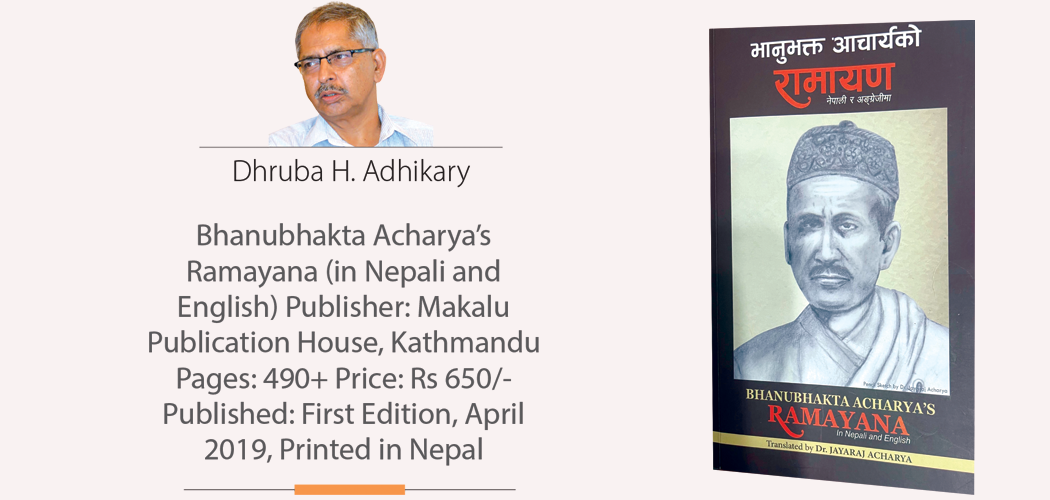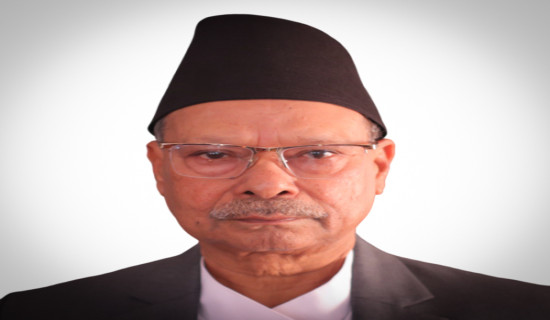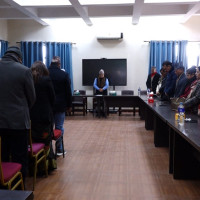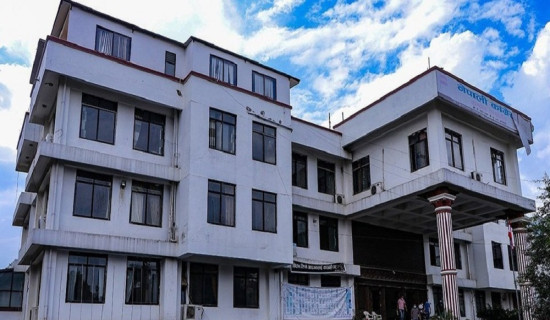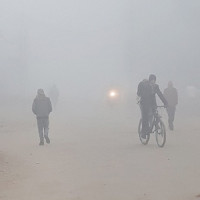- Saturday, 10 January 2026
A Nepali Ramayana For English Readers
Dhruba H. Adhikary
On the 29th of Asaar every year (around July 13), Nepali scholars and linguists make it a point to celebrate the birth anniversary of Bhanubhakta Acharya, the poet laureate whose contributions are often compared with those made by Geoffrey Chaucer (1340-1400) in English literature.
Bhanubhakta, fondly addressed as Bhanu in Nepal as well as in the Indian cities of Darjeeling and Dehradun, among others, is remembered primarily for the great book he has written—the Ramayana—in Nepali verse. The use of simple and colloquial Nepali words in the text-enabled even illiterate village folks to recite the story of Rama as a popular song.
Over time, Bhanubhakta's Ramayana also standardised the Nepali language, which gradually established itself as Nepal's lingua franca.
Ramayana was originally written in Sanskrit, the mother of several South Asian languages. It is in this context that scholars promptly refer to Adhyatma Ramayana. And litterateurs of different living languages have taken the trouble to translate this great Hindu Epic from Sanskrit. What Bhanubhakta (1814-1868) essentially did was he made the story accessible to the masses. But it would be an underestimate to say that Bhanubhakta did literally translate the story from Sanskrit to Nepali.
What he did was he read and digested the original text, and then rendered it in Nepali independently. That's why it eventually turned out to be Bhanubhakta's Ramayana.
One of his contemporary poets who wrote a short poem explaining the pious purpose of Bhanubhakta added a point: he desired to nudge the people so that their devotion to the god, Hari (Vishnu) would be more pronounced.
Bhanu was a kind-hearted scholar, said the anonymous poet. Likewise, Laxmi Prasad Devkota, the twentieth-century Nepali poet of great stature, too, has profusely eulogised Bhanu for all of his scattered literary works; but Ramayana has been singled out for paying glowing tribute to the author.
The present book—under discussion—is a translation of Bhanu's work into English. And it is translated by Dr Jayaraj Acharya, an acclaimed Nepali scholar, writer and diplomat. "Poetry is lost in translation," he concedes in the book's preface. Nevertheless, he has made a sincere attempt—and a successful one at that. Acharya's translation has been edited by Dr David L. Red, a man of letters from the United States. Since Dr Red knows both the history and geography of Nepal and speaks Nepali fluently, the readers of this version of Ramayana can be fairly assured of the authenticity of the translated contents. The editor considers the present volume as the translator's "great gift to his readers."
Meanwhile, Acharya has also acknowledged the suggestions he received from two other professors, Prayag Raj Sharma and Padma Prasad Devkota–the latter being the illustrious son of the great poet.
What, incidentally, must have prompted Acharya, who is a descendent of Bhanubhakta, to translate the Nepali Ramayana into English? Ostensibly, he felt it necessary to do it for "future generations of Nepali children". Like Dr Acharya, all of us see the widespread influence of the English language across the globe.
New generations of Nepalis, particularly those living in distant lands, are swiftly losing their mother tongue. As a result of this, they may be gradually deprived of their right to read the story of Shree Rama from the Nepali perspective.
Hence, it is very thoughtful of Acharya to produce this book—with meticulous care. As can be easily guessed, this scripture-like publication is for all English readers, not just for offspring of the Nepali diaspora abroad. It begins with an English summary of all seven episodes that make up Bhanu's Ramayana.
There are innumerable instances where the translator has made painstaking efforts to retain the essence of original words, making it easy for readers to comprehend the situation in a given context. One such example can be found in the episode called Sundarakanda (The Beautiful Meeting).
When Hanuman, as Rama's messenger, reaches the forest where Sita is left to lead a solitary life under a tree by her captor, Ravana, he utters a few words in a lowly, inaudible voice. And she can't understand anything at all. Then she says to herself: "How could I call it an illusion, for I'm perfectly conscious; How could I call it a dream? I'm not asleep at all !" The story moves ahead.
Undoubtedly, Dr Acharya's is the first English translation published in Nepal, and hence deserves unqualified appreciation for this contribution. This indeed is a book to be treasured for posterity. Keeping this in mind, the publisher should have used quality printing paper even if it entailed a moderately higher price tag. Hope this concern is addressed when the book undergoes the next edition.
Outside Nepal, the maiden venture to translate Bhanubhakta's Ramayana appears to have been made in Darjeeling a couple of years earlier. A Press Trust of India (PTI) report, dated 27th June 2016, said Gokul Sinha's English translation was launched by litterateur Indra Bahadur Rai. Needless to emphasise, the love for Nepali literature in the Darjeeling population has always been palpable.
The Bhanu Jayanti that year happened to be special because it was attended by President Pranab Mukherjee, together with West Bengal Chief Minister Mamata Benerjee.
Since this scribe has yet to get hold of a copy of author Gokul Sinha's translated work, he is unable now to discuss it at any great length. Nevertheless, he offers generous praise to Sinha, who has done his bit to bring the great story to the community of English readers far and wide.

